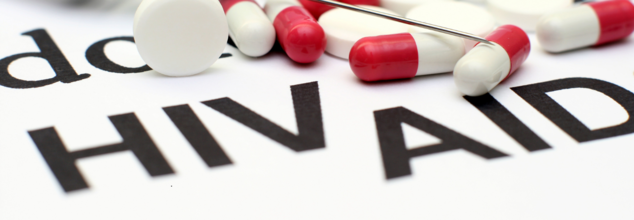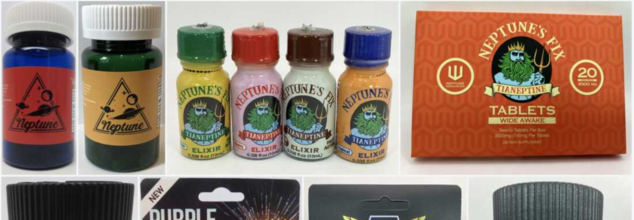- Health Conditions A-Z
- Health & Wellness
- Nutrition
- Fitness
- Health News
- Ayurveda
- Videos
- Medicine A-Z
- Parenting
- Web Stories
Ending AIDS By 2030 Now Less Likely Due To U.S. Cuts, Says UNAIDS

Credits: Canva
The global ambition to end AIDS as a public health threat by 2030 is now more uncertain than ever. Winnie Byanyima, Executive Director of UNAIDS, has warned that funding cuts introduced under former U.S. President Donald Trump will further derail progress on HIV/AIDS prevention and treatment. Speaking to journalists in Johannesburg, South Africa, Byanyima described the situation as “already off track,” citing the latest data that showed 1.3 million new HIV infections worldwide in 2023.
South Africa, which has the highest number of people living with HIV—around 8 million—was the backdrop for Byanyima's meeting with President Cyril Ramaphosa. Their discussion focused on how to sustain Africa’s HIV/AIDS response in light of major reductions in U.S. foreign aid, historically one of the region’s largest funding sources.
Ripple Effects Across Africa
Byanyima expressed concern over the growing impact of the funding cuts, particularly on local health systems. “Less funding means we will get more and more off-track,” she said, noting that the exact consequences remain to be seen. However, early signs are troubling: several countries have reported a decline in the number of people visiting clinics.
Previously, prevention programmes supported by foreign aid—especially those funded through the U.S. President’s Emergency Plan for AIDS Relief (PEPFAR)—had helped bring down infection rates. But the rate of decline wasn’t fast enough, Byanyima explained. With reduced funding now shuttering community clinics across Africa, she warned that infection rates could begin to rise again, although exact projections are unclear.
Treatment Supply Under Threat
The cuts have also created disruptions in the supply of critical antiretroviral drugs, which are essential for managing HIV. In some regions, countries are now at risk of running out of these life-saving treatments. South Africa, which relied on the United States for around 20% of its HIV budget, has already begun to experience the fallout. Testing and patient monitoring have seen a measurable decline.
Despite the challenging financial landscape, some low-income and heavily indebted countries are attempting to bridge the gap with their own limited resources. However, Byanyima emphasized that this approach is not sustainable and urged wealthier nations to step up.
"Don’t Stop Now"
Calling on global donors to renew their commitment, Byanyima argued that progress on HIV/AIDS is within reach—and that pulling back now would be a mistake. “This is one of the diseases without a cure, without a vaccine, yet we’re seeing progress,” she said. “If you’ve got a good success story, why drop it before you end it?”
Byanyima’s message was clear: while efforts have borne fruit, the world must not lose momentum. If the goal of ending AIDS by 2030 is to be achieved, urgent international cooperation and sustained investment will be critical.
Your Breathing Pattern Is 97% Unique, Just Like A Fingerprint, Study Finds

Credits: Canva
Breathing is as natural and unconscious as the pounding of a heartbeat. The majority of us don't consciously process each inhalation or exhalation. However, an intriguing recent study finds that the way you breathe may be as distinctly identifiable as your fingerprint. Scientists have found that each human has a personalized "respiratory fingerprint"—a breathing cycle so unique it can recognize an individual with almost 97% accuracy.
This new discovery has implications far beyond interest. From assessing mental illness to safeguarding biometric privacy, your breath could tell us more about you than you ever knew.
Carried out by researchers at the Weizmann Institute of Science in Israel, the research was headed by doctoral candidate Timna Soroka and published on June 12 in Current Biology. Researchers recruited 97 volunteers, who wore a device called the "Nasal Holter" for 24 straight hours. The wearable device, which weighed only 22 grams, took measurements of their natural breathing rhythms—while sleeping, working, resting, and going about their daily activities.
The payoff: By examining the subtle temporal rhythms of nasal breathing, scientists were able to determine that each subject's breath could identify him with 96.8% accuracy. The sensor tracked everything from inhale-exhale patterns to pauses before and after breathing, revealing a distinct rhythmic signature for every person.
What Is a "Respiratory Fingerprint"?
The "respiratory fingerprint" is the complex breathing pattern—how much, how frequently, and with what rhythm a person breathes. It may sound too ordinary to be special, but breathing is controlled by the brain's intricate respiratory control network. And because every brain is different, so is the breath it controls.
Lead researcher Noam Sobel said the team broke each 24-hour dataset into five-minute chunks and considered dozens of features with machine learning. They included esoteric but revealing traits like the time between inhalation and exhalation and the normal flip in airflow between nostrils.
Surprisingly, the research didn't rest there. Researchers cross-referenced the breathing information for each participant with a question about mental and physical health. What they discovered was nothing short of intriguing: higher self-reported anxiety individuals had more variability in their pauses between breaths. Other aspects of breathing pattern also matched up with BMI and other bodily states.
This linking of breathing and mind supports the increasingly robust literature suggesting that breath is a compelling diagnostic device—one that indicates not only lung function but also psychological and neurological well-being.
Renato Zenobi, an analytical chemistry professor at ETH Zurich, who was not part of the research, described the findings as "novel." According to him, the research would improve the significance of breath analysis as a non-invasive diagnostic tool. When applied along with breath metabolite testing, it would reinforce the accuracy of diagnosing metabolic disorders to anxiety and depression.
Envision a future in which a wristwatch-size device silently tracks your breath and warns your doctor of incipient signs of Parkinson's disease, sleep apnea, or even a panic attack. This would provide unprecedented preventive treatment with no needles, no scans, and no self-reporting bias.
What About Privacy?
As exciting as these breakthroughs are, they introduce a raft of ethical considerations. If our breath is a biometric signature, can it be used for monitoring? Currently, the Nasal Holter needs to be in direct contact and requires hours of usage. But with developing sensor technology, it's possible that distant breath monitoring could be achieved.
Soroka and Sobel recognize these issues and call for balancing scientific advancement with protecting privacy. Biological information such as breathing rates is involuntarily generated—i.e., we exhibit it all the time, whether we mean to or not. If it becomes readable from a distance, it might redefine the terms of biological privacy.
Real-World Limitations and Challenges
Notwithstanding the enthusiasm, the research is not without limitations. The population used was primarily healthy, young adults, and one can raise issues regarding the universality of the findings for children, the elderly, or people with respiratory illness. Also, wearing the device for 24 hours was daunting for some participants—especially while sleeping, when the nasal tubes fell out of position from time to time.
And although there was a high degree of association between breathing patterns and subjects' self-rated state of anxiety, these tests were not clinically certified. Additional research is required to determine if respiratory prints can accurately identify diagnosed medical or psychological illnesses.
We are headed toward an age when breath diagnostics could become a part of routine healthcare but as is the case with all great technologies, this development will need to be taken cautiously, respecting peoples' privacy and having ethical standards clear. As your lungs rhythmically fill and empty with air, they could be speaking your story in ways unimaginable to you.
Gas Station Heroin: What Is The Dangerous 'Cognitive Supplement' Experts Are Warning About?

Credits: FDA
In recent months, a wave of concern has rippled through the U.S. public health community over a so-called “cognitive supplement” that’s been quietly—and dangerously slipping into the hands of consumers. Marketed with appealing names and colorful packaging, often sold at gas stations, smoke shops, and corner stores, these energy-boosting elixirs and mood enhancers are anything but benign. They contain tianeptine, an unapproved drug in the United States that’s quickly earning notoriety under the alarming nickname “gas station heroin.”
With a growing number of emergency calls, FDA warnings, and unregulated formulations circulating under the radar, tianeptine has become a chemical wildcard posing significant risks to public health while masquerading as an over-the-counter supplement.
What Is Tianeptine?
Tianeptine is a tricyclic antidepressant originally developed and approved for use in several European, Asian, and Latin American countries to treat conditions like major depressive disorder, anxiety, and even irritable bowel syndrome. Despite these approved medical uses abroad, tianeptine has never received approval from the U.S. Food and Drug Administration (FDA) for any therapeutic purpose.
What’s particularly alarming is the way this compound is being sold in the U.S.—not as a regulated pharmaceutical, but as an unregulated cognitive enhancer or energy booster, available under brand names such as Zaza, Tianna, Pegasus, TD Red, and Neptune’s Fix. These products are packaged to resemble energy drinks or wellness shots, creating a false sense of safety for unsuspecting buyers.
How Tianeptine Is Slipping Through the Regulatory Cracks
Tianeptine’s entry into the U.S. market exploits a regulatory loophole. The FDA doesn’t preapprove ingredients used in supplements before they hit store shelves. As a result, many companies are selling tianeptine-based products under the guise of dietary supplements, despite explicit warnings from the FDA stating that tianeptine cannot legally be added to food, beverages, or supplements.
“It’s kind of this grey area of consumer products,” explains Dr. Diane Calello, medical director of the New Jersey Poison Information and Education System. “These products are not tested or regulated in the same way that medications are.”
This grey area is not without consequences. A recent study led by Calello documented a cluster of emergency cases in New Jersey, where individuals experienced symptoms such as rapid heartbeat, seizures, and low blood pressure after consuming a tianeptine-laced beverage called Neptune’s Fix. Of the 20 patients, more than half were admitted to intensive care units.
Why Are People Using Gas Station Heroin?
Tianeptine’s appeal lies in its opioid-like effects, even though it is not classified as an opioid. The drug interacts with mu-opioid receptors in the brain, producing short-term euphoria, pain relief, and mood elevation. These effects are similar to those of controlled narcotics like oxycodone—but without the same legal restrictions.
Some products claim, without clinical backing, that tianeptine can treat addiction, anxiety, depression, and even sexual dysfunction. In 2018, the FDA issued a warning letter to the makers of Tianna, a supplement that claimed to offer a solution to opioid cravings—another red flag in a market already marred by misinformation.
But the pursuit of relief comes at a price. Many users increase their dosage over time, either to self-treat withdrawal symptoms or to chase a high. High doses can cause severe respiratory depression, the same life-threatening condition caused by opioid overdoses. And unlike regulated medications, there’s no standardization in these products, making them even more dangerous.
What are The Risks And Side Effects of Using Tianeptine?
Even in small doses, tianeptine is not without risk. Reported side effects include:
- Nausea and vomiting
- Dizziness and drowsiness
- Constipation
- Abdominal discomfort
- Bad dreams
- Headaches
- Dry mouth
However, when misused or taken in large amounts—especially in combination with substances like alcohol, opioids, or stimulants—tianeptine can lead to cardiac arrest, seizures, or even death.
Moreover, regular users may find themselves battling withdrawal symptoms similar to those experienced during opioid withdrawal. These can include:
- Agitation and anxiety
- Muscle pain and sweating
- Depression
- Chills and trembling
Withdrawal begins quickly and can be intense, reinforcing the cycle of dependence.
The FDA and U.S. poison control centers have issued repeated alerts, cautioning the public and health professionals about the growing number of adverse events linked to tianeptine.
Last month, the FDA took a firmer stance, warning healthcare providers about “the magnitude of the underlying danger of these products.” Poison control centers across the country have seen a steady uptick in calls involving tianeptine-related overdoses, particularly among individuals with a history of substance use or mental health issues.
Despite these warnings, tianeptine remains accessible in many gas stations and smoke shops, often labeled misleadingly as a natural mood enhancer or energy booster. This underscores the need for stronger regulations and consumer awareness campaigns.
If you or someone you know is experiencing depression, anxiety, addiction, or chronic pain, consult a licensed medical professional for FDA-approved treatments. There are safe and effective therapies available—including medications and cognitive behavioral therapy—that have been rigorously tested and regulated.
Avoid purchasing any so-called “cognitive supplements” or energy drinks from gas stations or smoke shops, especially those that are vaguely labeled or make unverified medical claims.
If you suspect someone is experiencing an overdose or withdrawal from tianeptine, contact emergency medical services immediately.
What’s marketed as a quick fix in a flashy bottle may actually be a dangerous and addictive drug. As the story of gas station heroin unfolds, it’s clear that consumers need to be vigilant, and regulators must act faster to protect public health.
World Blood Donor Day 2025: Theme, Significance, And History

Credits: Canva
Every year on June 14, World Blood Donor Day is observed. As per the World Health Organization (WHO), the world celebrates World Blood Donor Day, a global tribute to the millions of voluntary, unpaid blood donors who give others a second chance at life.
Each time you donate blood, you’re giving more than a life-saving gift—you’re enabling critical medical tests that guide treatment and improve care. This World Blood Donor Day, remember: your donation isn’t just for emergencies, it plays a vital role in everyday healthcare too.
History of World Blood Donor Day
The World Blood Donor day dates back to 2004, when it was established by the WHO and is partners. The aim for this was to create a global recognition for he contributions of voluntary donors and to encourage safe blood practices in every country.
Since then, it has become an essential health campaign that brings attention to the need for regular donation. The day also celebrates unsung heroes who, through this simple ac, save lives.
World Blood Donor Day 2025 Theme
This year, as notes WHO, the theme is "Give blood, give hope, together we save lives".
This year’s World Blood Donor Day campaign, with the slogan “Give blood, give hope: together we save lives,” emphasizes the life-changing role blood donors play in saving lives. It underscores the power of community and collective action, showcasing how a simple act of donating blood can create a ripple effect of hope for those in need. Through the sharing of personal stories from both recipients and donors, the campaign aims to inspire more individuals, particularly young adults, to take part in blood donation—whether as first-time donors or as regular contributors.
The campaign will feature, as WHO notes, a variety of activities to celebrate and acknowledge the efforts of blood donors. These could include commemorative events, workshops, social media initiatives, donor appreciation ceremonies, and special broadcasts to honor those who give blood. In addition, musical and artistic performances may be held to express gratitude, while impactful stories will be shared to raise awareness about the importance of blood donation. This year’s objectives are to increase public awareness about the critical need for blood donations, encourage both new and returning donors to donate regularly, and promote solidarity and compassion through these life-saving acts. Furthermore, the campaign seeks to rally support from governments and global partners to ensure sustainable national blood programs, aiming for universal access to safe blood transfusion worldwide.
World Blood Donor Day Significance
This day encourages more and more people to donate blood and save a life. Blood transfusions provide life-saving support, notes WHO. This is especially true for women who experience bleeding related to pregnancy and childbirth, or children who suffer from severe anemia due to malaria or malnutrition.
Other scenarios, notes WHO, where blood transfusion helps include, complex medical procedures, patients with sickle-cell disease, thalassemia, hemophilia, or immune deficiency disorder, or for emergency responses, in cases of natural disasters or armed conflicts.
© 2024 Bennett, Coleman & Company Limited

